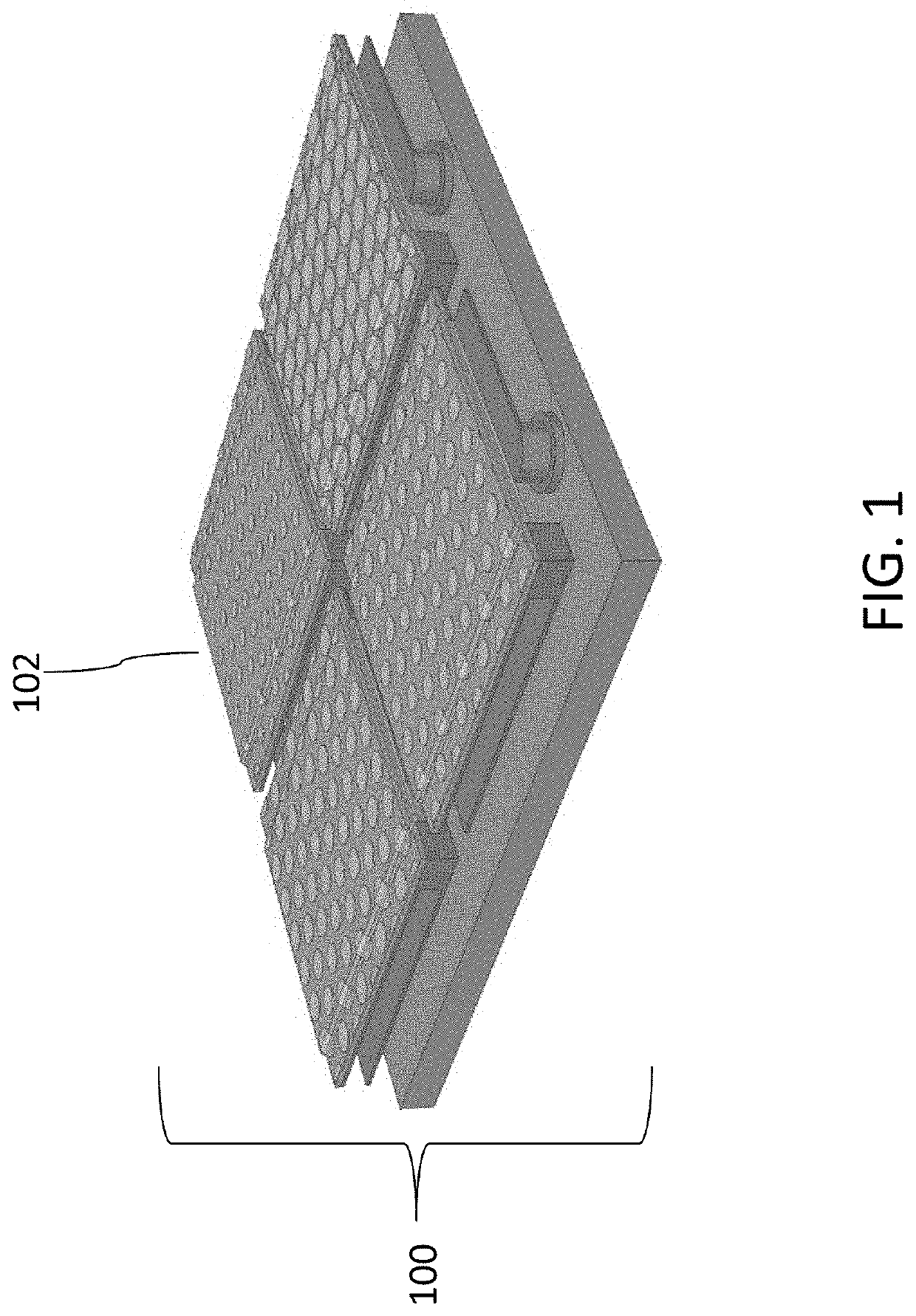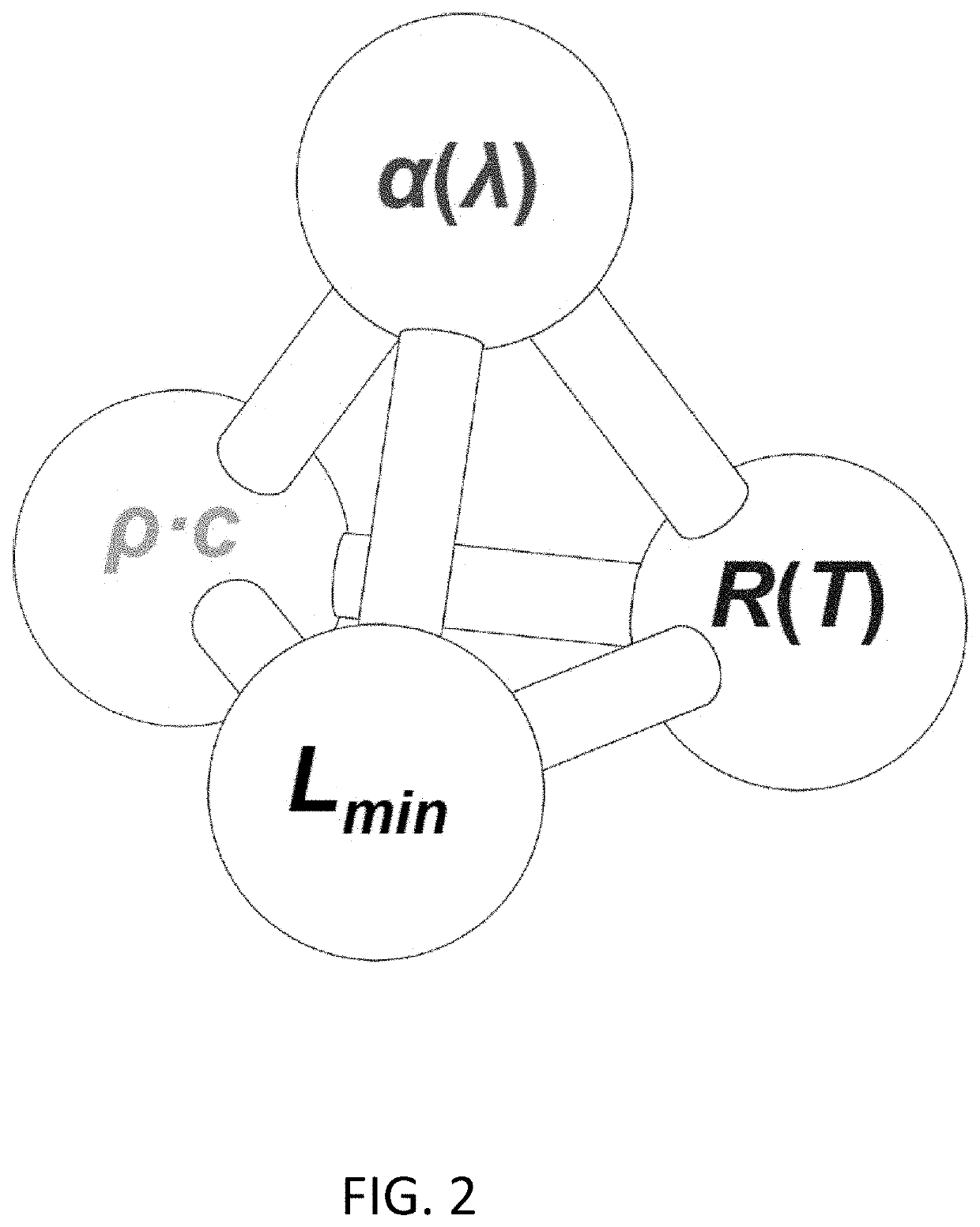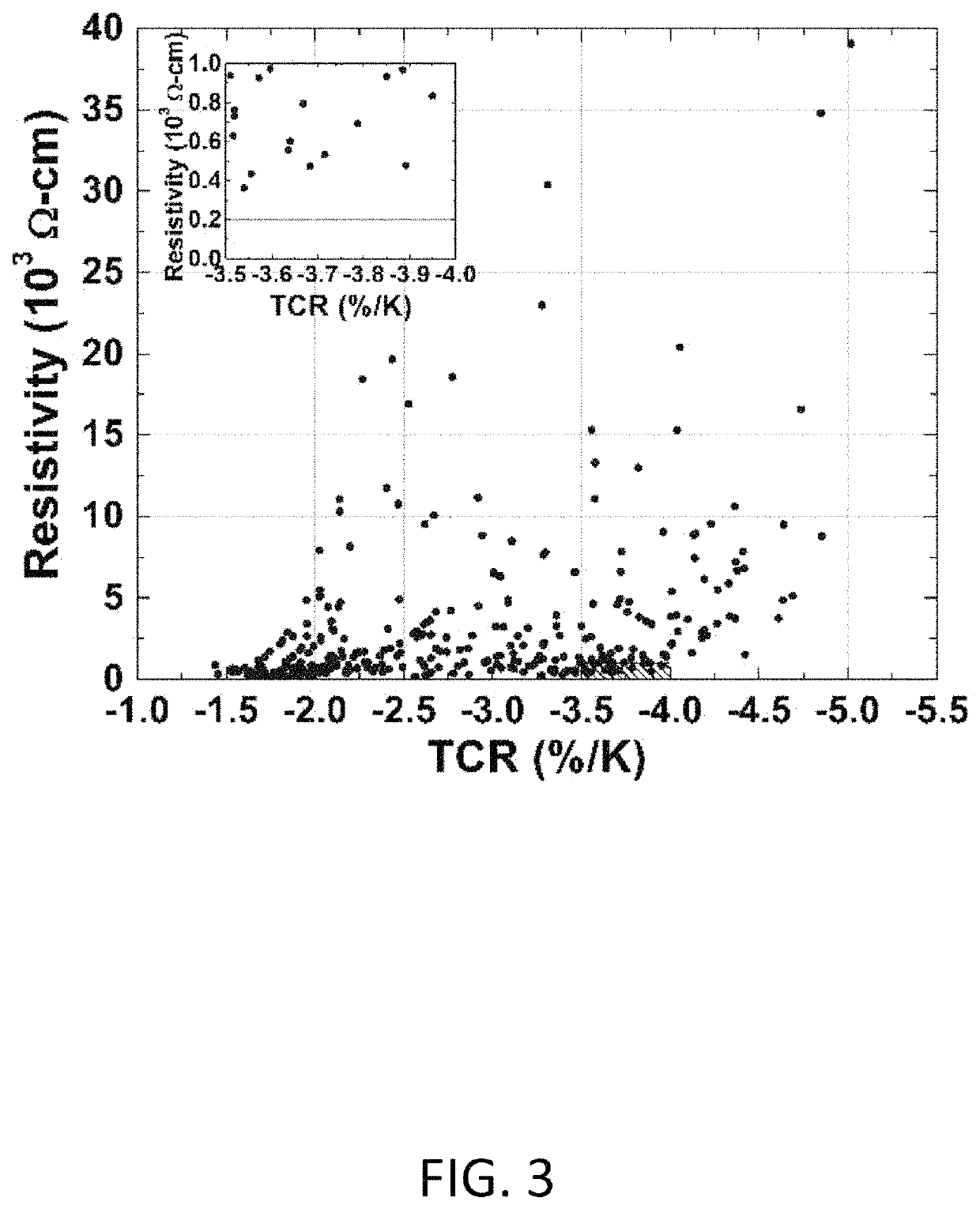Frequency-selective metasurface integrated uncooled microbolometers
a metasurface and microbolometer technology, applied in the field of frequency-selective metasurface integrated uncooled microbolometers, can solve the problems of vox, spatial noise and complicated design, and relatively low frame rate of both materials, so as to improve equipment, minimize moving parts, and improve performance
- Summary
- Abstract
- Description
- Claims
- Application Information
AI Technical Summary
Benefits of technology
Problems solved by technology
Method used
Image
Examples
Embodiment Construction
[0096]Metasurface integrated uncooled amorphous silicon germanium oxide (SixGeyO1-x-y) microbolometers include a metasurface, also known as an FSS, which is a periodic array of sub-wavelength antenna elements that establishes unusual properties from their structural design. FIG. 1 shows a microbolometer 100 including four pixels, of which pixel 102 represents one of the four pixels. The absorption at the IR frequencies is highly dependent on the metasurface geometry, and can be engineered for selectivity with respect to wavelength, polarization, and angle of incidence. EM energy with the correct characteristics is converted to heat, while other energy is reflected or transmitted away from the device. Metasurfaces can be coupled to a microbolometer platform, enabling an FPA to resolve these parameters. For example, one pixel can respond to horizontal polarized radiation while the adjacent pixels are sensitive to vertical or circular polarized radiation. Similarly, different microbolo...
PUM
| Property | Measurement | Unit |
|---|---|---|
| wavelengths | aaaaa | aaaaa |
| thickness | aaaaa | aaaaa |
| area | aaaaa | aaaaa |
Abstract
Description
Claims
Application Information
 Login to View More
Login to View More - R&D
- Intellectual Property
- Life Sciences
- Materials
- Tech Scout
- Unparalleled Data Quality
- Higher Quality Content
- 60% Fewer Hallucinations
Browse by: Latest US Patents, China's latest patents, Technical Efficacy Thesaurus, Application Domain, Technology Topic, Popular Technical Reports.
© 2025 PatSnap. All rights reserved.Legal|Privacy policy|Modern Slavery Act Transparency Statement|Sitemap|About US| Contact US: help@patsnap.com



